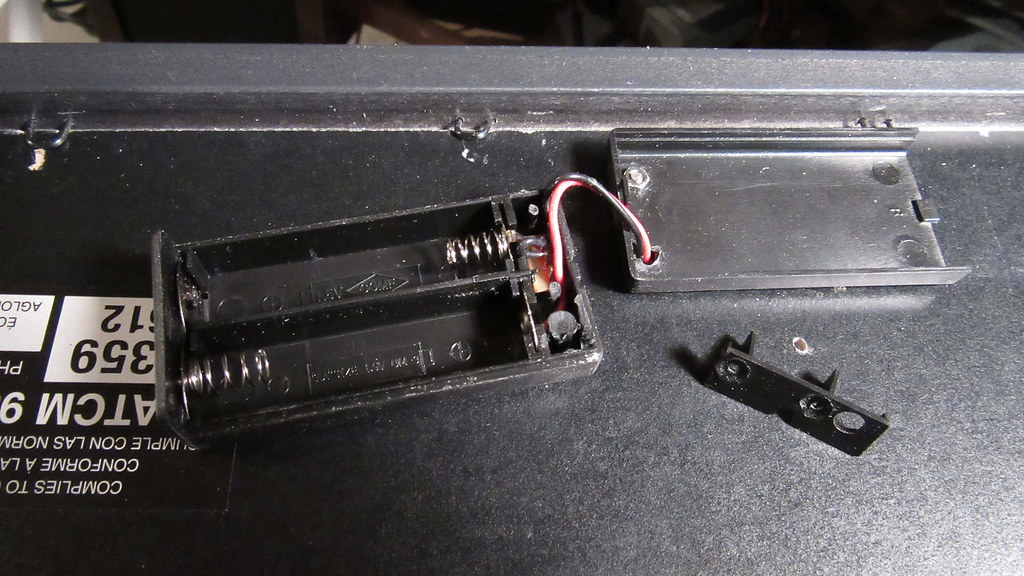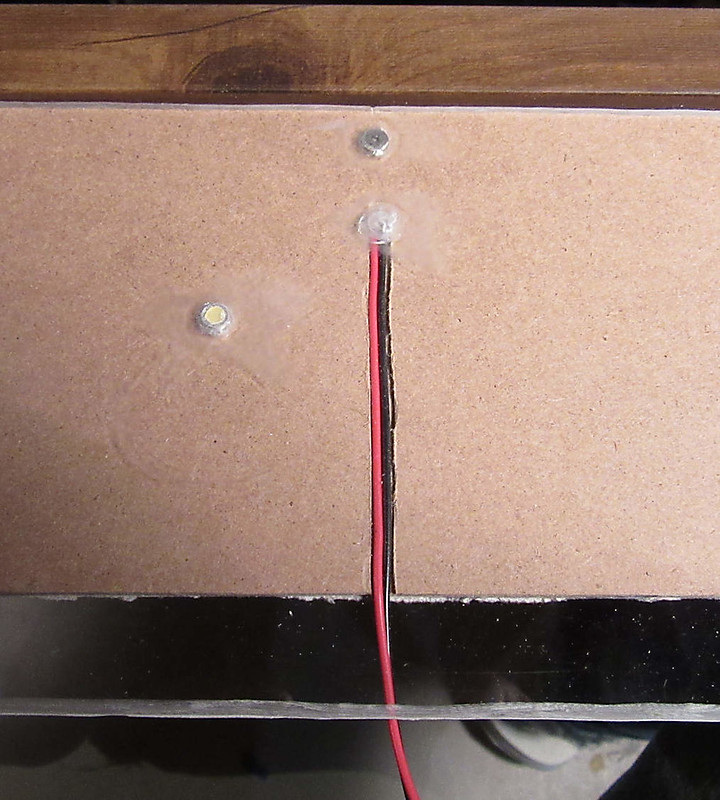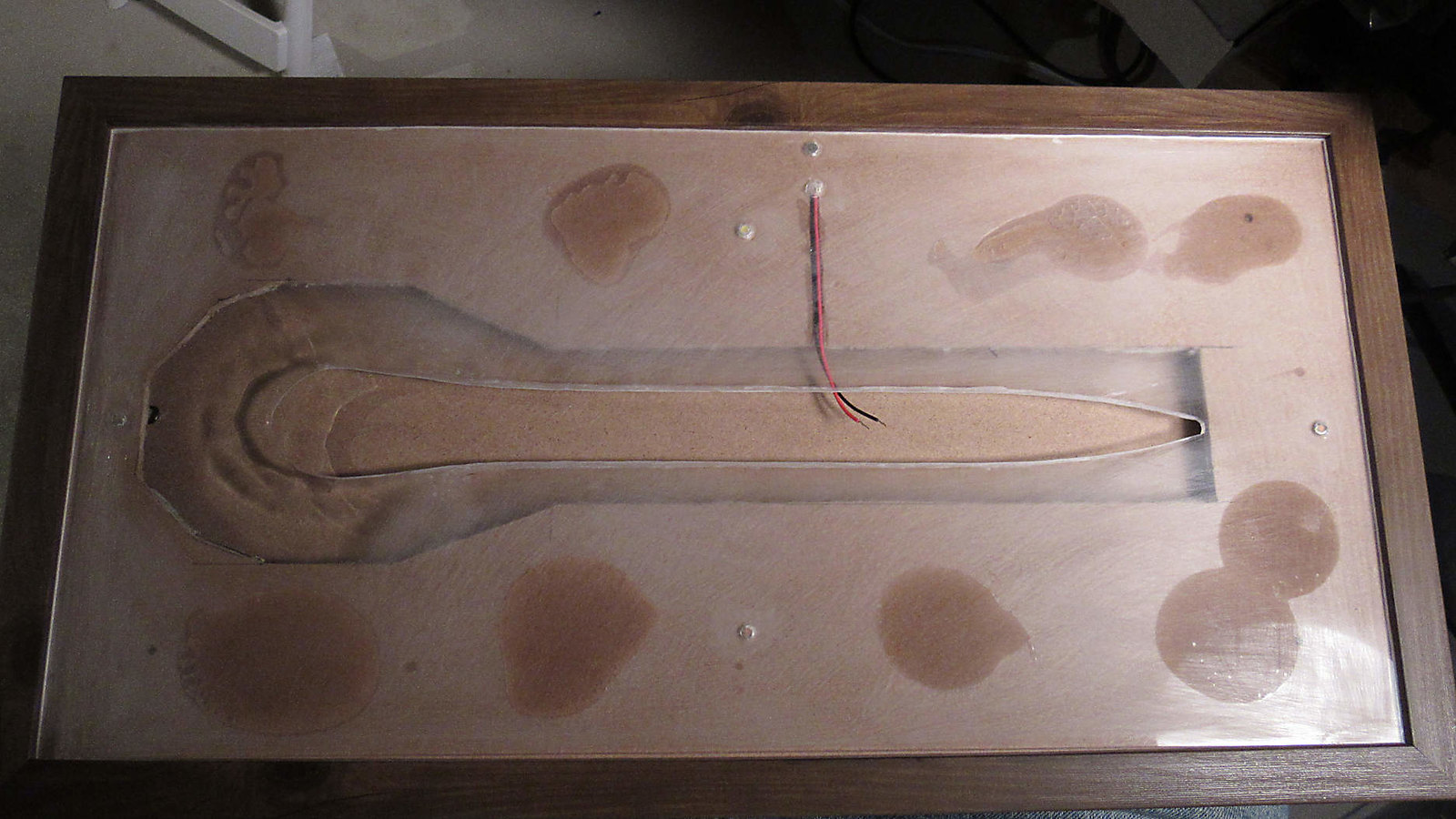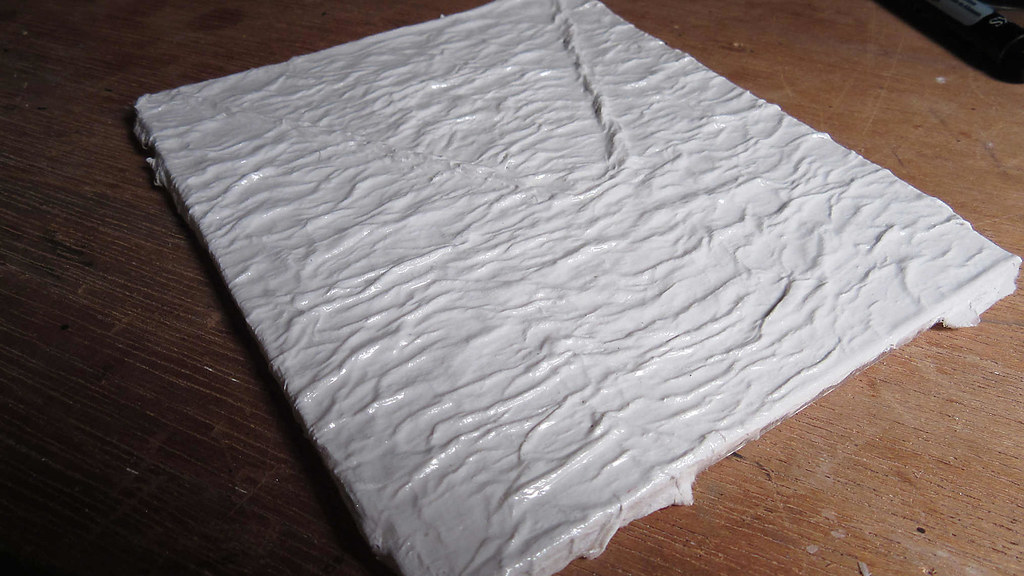Making lemonade out of lemons
Below: You may recall when I said that two screws are better than one. Well, as luck would have it, one of them broke through the plexiglass rendering it useless. I resigned myself to using only one. I will use epoxy on the housing to help secure it.
Moving on... I needed to drill a hole through the backing board in order to route the wiring under the glass, that leads into the Seaview compartment. I stared at that now useless hole, and I wondered, can I use that hole for the wires instead?
Yes I can, is the answer. I had to pop off (lower right) that plastic cover in order to do it, but that is no matter. What is nice about this is that now, there will be no visible wiring.

Below: Using a grinding bit, I cut a groove in the backing board so that the wires will lay recessed under the glass.

Below: The plexglass is affixed. I really wanted to do all the water-work with having the glass off of the base, but... with the glass being so flexible, I feared that I would risk fracturing things during handling. The glass bends under its own weight even. It's better that I affix it. By doing it this way though, it makes doing some other things harder to do.
A few things to note:
1. I sanded the plexiglass in the hope that it will allow for a stronger bond to the wave layer. I was careful not to sand the area at the bow.
2. The blotches are areas where I applied epoxy. The glass gets pulled down when the pedestal is screw down, but, I wanted a little something more to minimize movement when the pedestal is not installed. It won't be permanently installed until I can secure the sub into its berth.

Below: Here is my second attempt at using the Model RR method. With this test, I am still striving to fabricate the waves, and, to acclimate myself with the various products and processes used.
You can see that I experimented with making a bow wave as well. I wouldn't take too much from this, it is crude. But, for me, I think that this will work for this project. I am moving forward with it. I plan to run a few more of these tests before I actually do it on the plexiglass. I need more practice with the waves, and, I need to hone a few other things too.
Here is a link to how this is done.
https://www.youtube.com/watch?v=2TwpB7sVMn8
One thing though. I have already diverged from the author's process at the point when the waves are formed. I plan to try experimenting with using something other than PVA glue as well.
More to come.
